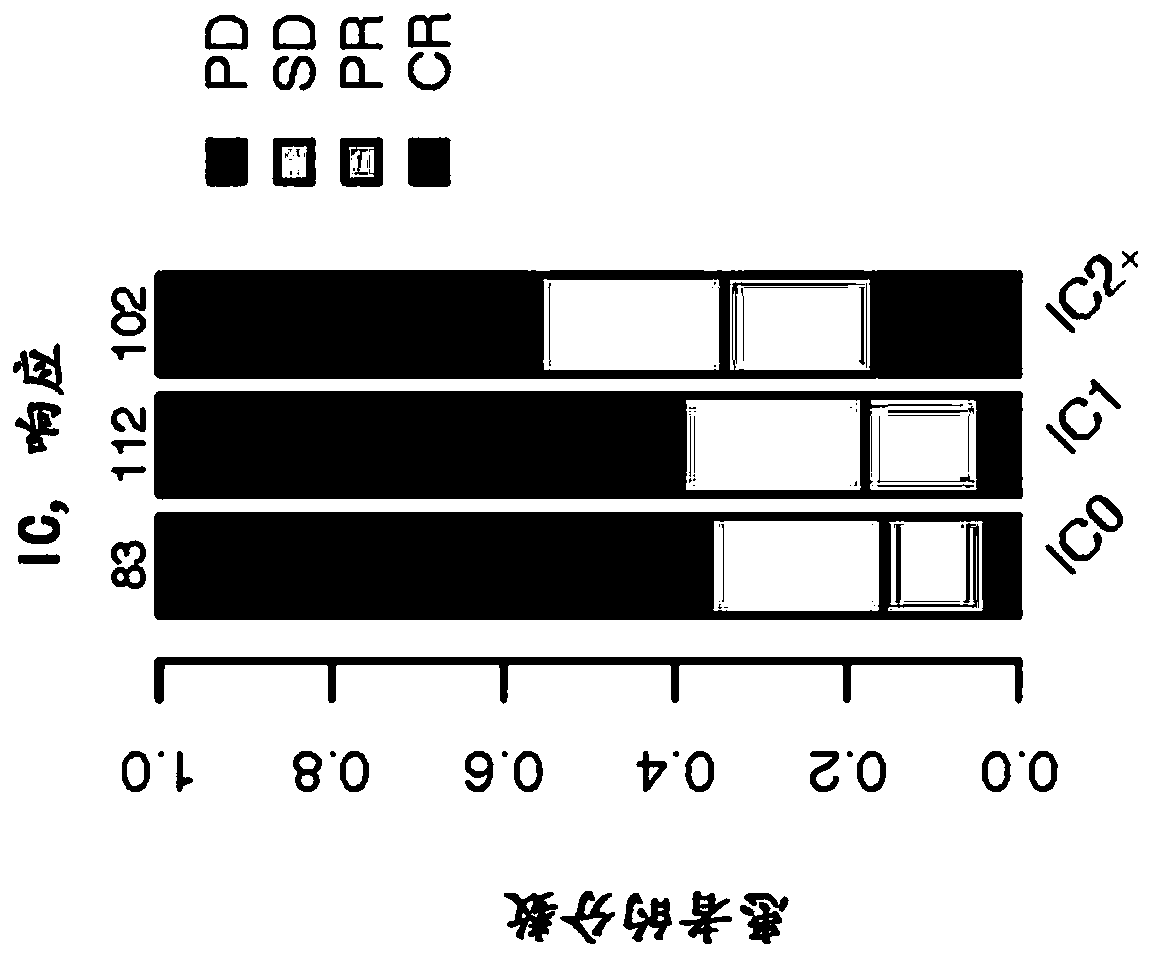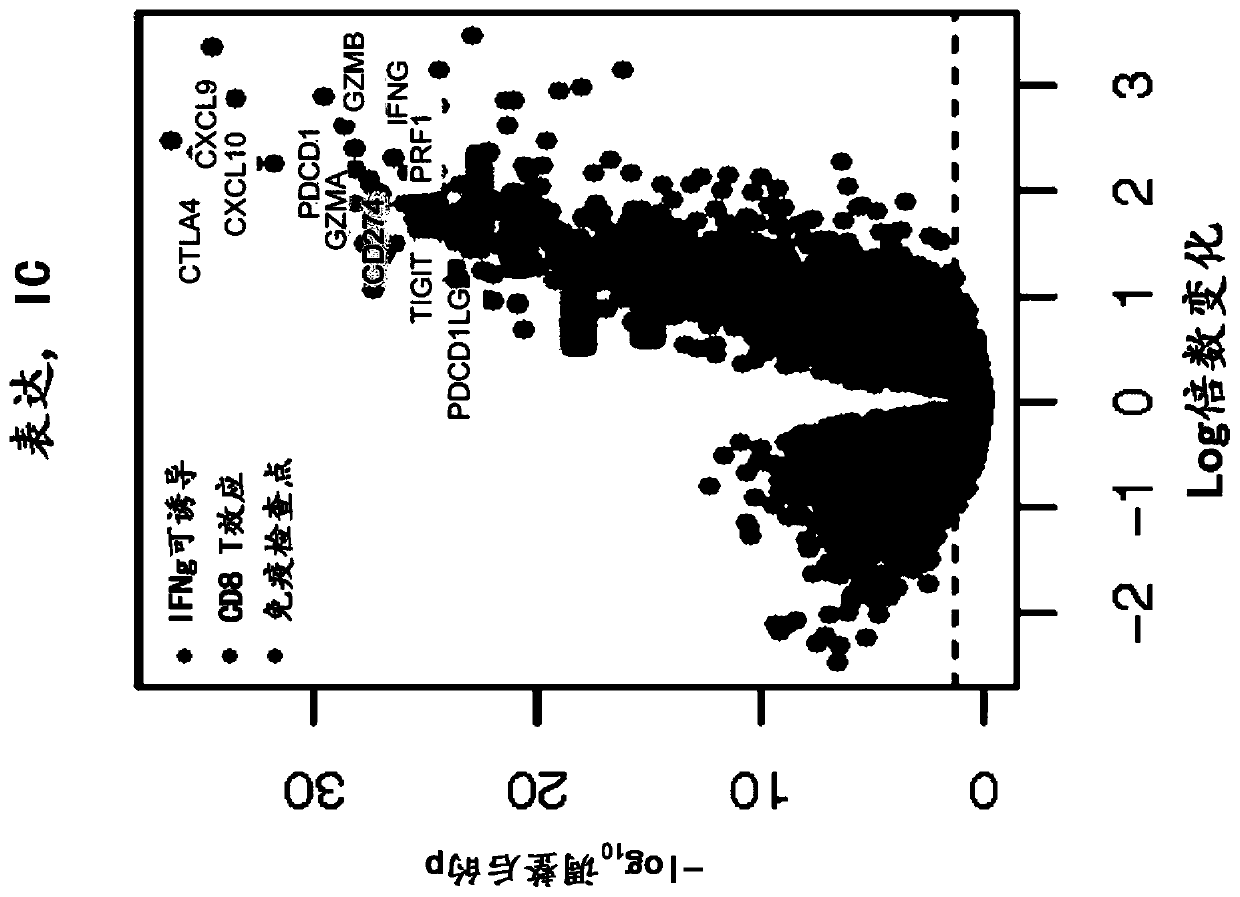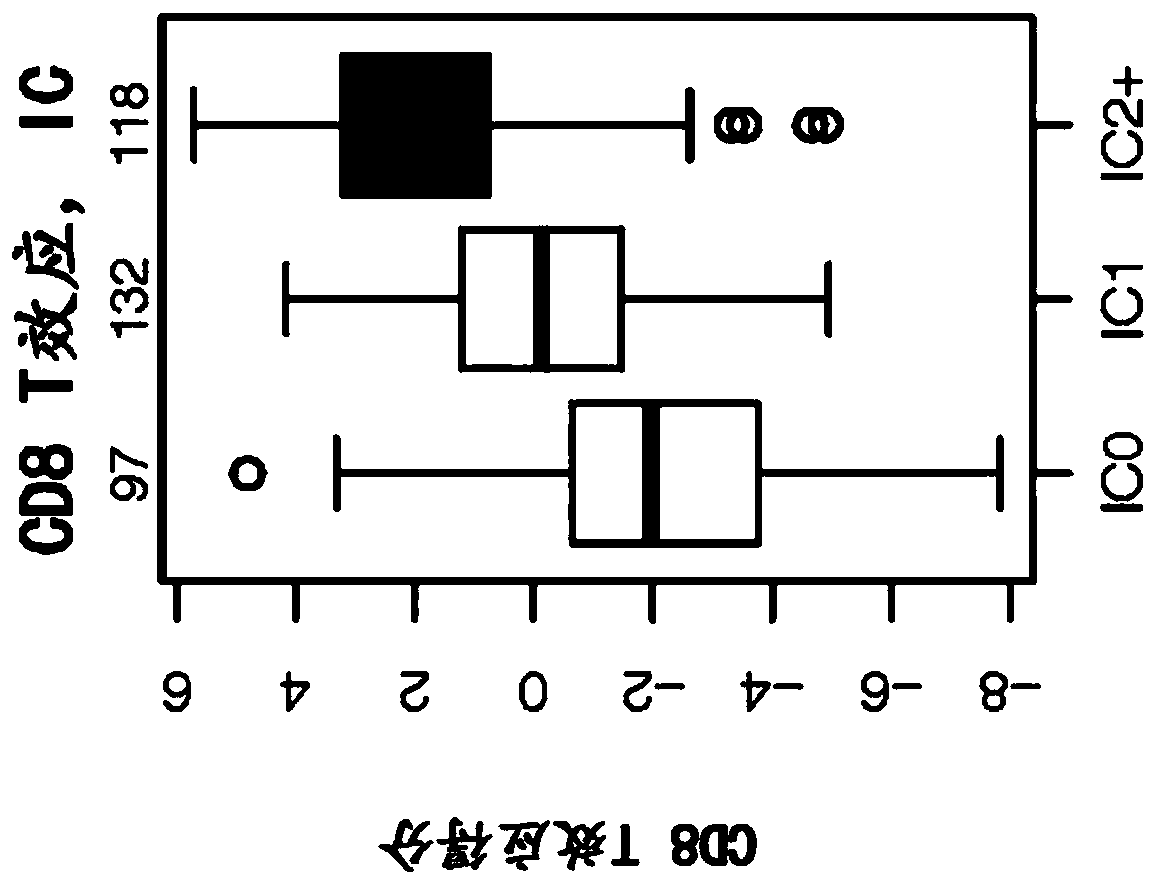Diagnostic and therapeutic methods for cancer
A therapy and cancer technology, applied in the field of cancer diagnosis and treatment, can solve the problems of suppressing anti-tumor immune activity and down-regulating T cell activation
- Summary
- Abstract
- Description
- Claims
- Application Information
AI Technical Summary
Problems solved by technology
Method used
Image
Examples
Embodiment 1
[0765] Example 1: Pre-existing tumor immunity is associated with a complete response in inflamed tumors
[0766] Most human solid tumors appear to exhibit one of three distinct immune phenotypes: an "immuno-inflamed" phenotype, characterized by robust CD8+ T cell infiltration and PD-L1 expression; an "immuno-excluded" phenotype, in which T cells Accumulation in extracellular matrix-rich stroma; and "immune desert" phenotype, which is characterized by a depletion of infiltrating lymphocytes in the tumor or surrounding stroma. Inflamed tumors are thought to be more responsive to checkpoint blockade compared to immune-depleted or immune-desert phenotypes that predict weak or no responsiveness. However, this association has not been systematically tested in the context of large clinical trials or within a single tumor type. To understand the response to atezolizumab therapy in mUC, we combined an integrated molecular and histological analysis with a reverse translation approach t...
Embodiment 2
[0774] Example 2: Tumor mutational burden (TMB) driven by proliferation, APOBEC expression, or DNA damage repair deficiency is associated with response to atezolizumab
[0775] Along with melanoma and non-small cell lung cancer, bladder cancer is characterized by one of the highest somatic TMB among human cancers. Response to atezolizumab was significantly associated with TMB in mUC, and this association was also significant in the full IMvigor210 dataset ( Figure 1E ). The correlation of TMB is likely via the elevated potential of immunogenic neoantigens, and consistent with this, predicted tumor neoantigen burden (TNB) was also significantly associated with response ( Figure 1F ). TMB and TNB are also related to OS ( Figure 1V and 1W ). For example, using the median TMB as a cutoff, an improved OS benefit from atezolizumab was observed in patients with high TMB relative to patients with low TMB ( Figure 8B ). Improved OS from atezolizumab was also observed in pati...
Embodiment 3
[0796] Example 3: The TGF-β axis is associated with major immune escape
[0797] Next, we sought to identify any additional features associated with the response beyond CD8+ T cell immunity and TMB. Consistent with the positive correlation between proliferation and TMB, gene sets related to DNA replication, cell cycle, and histones were significantly enriched in responders ( Figure 1O , Table 8). Gene set enrichment analysis also identified the cytokine-cytokine receptor gene set as the only signature associated with non-response ( Figure 1O , Table 8). Importantly, the most significantly associated genes within this pathway were IFNGR1 and genes involved in the TGF-β signaling pathway, including TGFB1, ACVR1, and TGFBR2. Although IFN-γ is known to have beneficial effects on antitumor immunity, this cytokine has also emerged as a key player in primary resistance to checkpoint therapy and in acquired immune escape. In our large cohort of patients with mUC, we observed sig...
PUM
 Login to View More
Login to View More Abstract
Description
Claims
Application Information
 Login to View More
Login to View More - R&D
- Intellectual Property
- Life Sciences
- Materials
- Tech Scout
- Unparalleled Data Quality
- Higher Quality Content
- 60% Fewer Hallucinations
Browse by: Latest US Patents, China's latest patents, Technical Efficacy Thesaurus, Application Domain, Technology Topic, Popular Technical Reports.
© 2025 PatSnap. All rights reserved.Legal|Privacy policy|Modern Slavery Act Transparency Statement|Sitemap|About US| Contact US: help@patsnap.com



